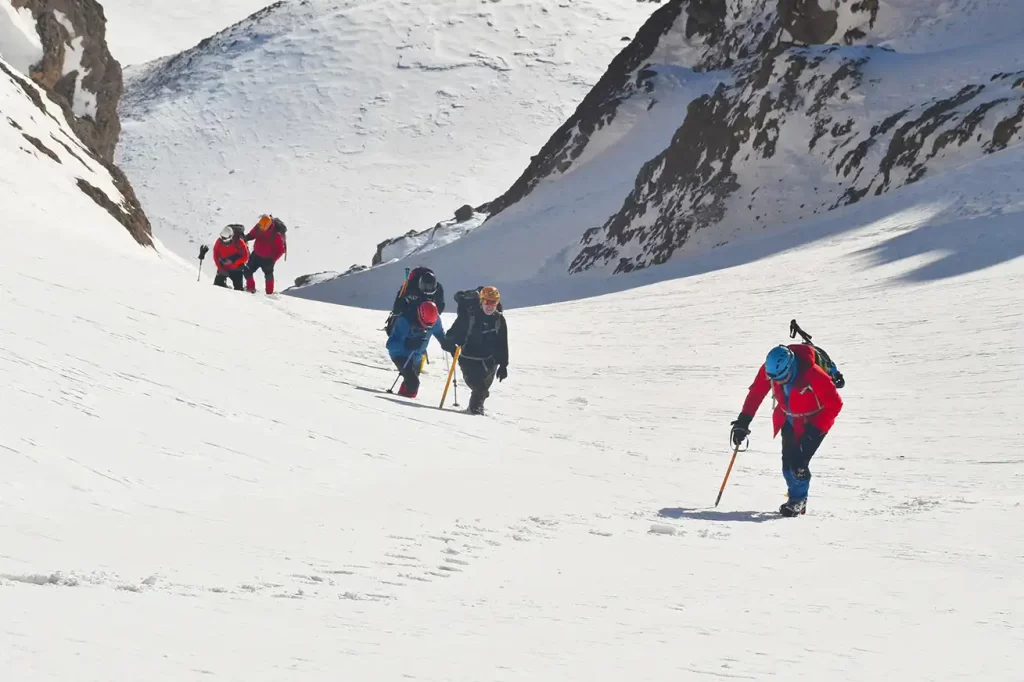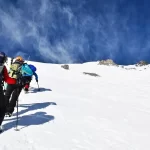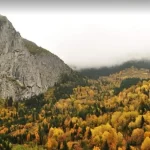How to Plan a Route in Mountaineering?
Define your objective
Decide what your goal is, such as summiting a particular peak, exploring a new area, or completing a specific route.
Defining your objective in mountaineering refers to identifying and setting a specific goal or purpose for your trip. This goal will guide your planning and preparation and help you choose an appropriate route and equipment. Your objective could be anything from summiting a particular peak, exploring a new area, completing a specific route, or achieving a personal best.
Defining your objective is important because it helps you stay focused and motivated throughout your trip. It also enables you to tailor your planning to achieve that objective, whether it be selecting a route that matches your experience level, packing the appropriate gear for the terrain, or preparing for specific weather conditions.
By having a clear objective in mind, you can also better communicate your goals to your fellow climbers or team members, allowing for a more cohesive and effective team effort. Additionally, having a specific objective helps you measure your success and satisfaction with the trip, giving you a sense of accomplishment and accomplishment.
Ultimately, defining your objective is an essential step in mountaineering trip planning, helping you to clarify your purpose, plan effectively, and achieve your goals.
Research the area
Gather as much information as possible about the terrain, weather patterns, and potential hazards. Look for guidebooks, maps, trip reports, and online resources.
Researching the area is an essential step in planning a mountaineering route. It involves gathering as much information as possible about the terrain, weather patterns, and potential hazards in the area you plan to visit. By conducting thorough research, you can better understand the challenges and risks associated with the route, which will help you plan accordingly.
There are several resources you can use to conduct research on the area you plan to visit. Guidebooks are an excellent source of information, providing detailed descriptions of the terrain, route options, and technical difficulty. Maps are also essential, providing information on the elevation, topography, and landmarks of the area.
Additionally, trip reports from other climbers or hikers who have completed the route can provide valuable insights into the terrain, conditions, and potential hazards. Online resources, such as blogs and forums, can also be helpful, as they often contain first-hand accounts, photos, and videos of the area.
When conducting research, it’s important to consider the weather patterns and potential hazards in the area. Check the weather forecast for the area you plan to visit, paying close attention to temperature, precipitation, and wind patterns. This information will help you plan for changes in weather conditions and adjust your itinerary accordingly.
Identify potential hazards, such as avalanche danger, rockfall, crevasses, and other hazards, and plan how to mitigate these risks. Consider the level of technical difficulty of the terrain and choose a route that matches your abilities and experience level.
In summary, researching the area is a critical step in planning a mountaineering route. Gather information from a variety of sources, including guidebooks, maps, trip reports, and online resources. Pay attention to weather patterns and potential hazards and plan accordingly. By conducting thorough research, you can better prepare for the challenges and risks of the route and increase your chances of having a safe and successful trip.
Evaluate your skills and experience
Choose a route that matches your abilities and experience level. Consider the technical difficulty of the terrain, the length of the route, and the altitude.
Evaluating your skills and experience is an important step in planning a mountaineering route. It involves assessing your physical and technical abilities to choose a route that matches your experience level. This will help you to ensure that the route you choose is challenging but manageable, reducing the risk of accidents or injuries.
When evaluating your skills and experience, consider the technical difficulty of the terrain, the length of the route, and the altitude. Technical difficulty refers to the level of skill required to navigate the route, such as rock climbing or ice climbing. Length of the route refers to the distance and duration of the climb, which can vary from a few hours to several days. Altitude is also a critical factor, as higher altitudes can cause altitude sickness, dehydration, and other health issues.
Choose a route that matches your abilities and experience level, and avoid routes that are too challenging or dangerous. If you’re new to mountaineering, start with easier routes that match your skill level and gradually build up to more challenging climbs. It’s also a good idea to take classes or hire a guide to improve your skills and knowledge of mountaineering techniques.
Remember that mountaineering is a physically demanding activity that requires proper training, preparation, and equipment. Even experienced climbers can face unexpected challenges and risks, so it’s important to be prepared for the unexpected.
In summary, evaluating your skills and experience is a critical step in planning a mountaineering route. Choose a route that matches your abilities and experience level, considering the technical difficulty of the terrain, the length of the route, and the altitude. By selecting an appropriate route, you can minimize the risks and enjoy a safe and successful climb.
Consider the season and weather
The weather can have a significant impact on your route, so plan accordingly. Check the weather forecast and plan for changes in weather conditions.
Considering the season and weather is another critical step in planning a mountaineering route. Weather conditions can have a significant impact on your climb, affecting everything from visibility to the condition of the terrain. To ensure a safe and successful climb, it’s important to plan for changes in weather conditions and adjust your itinerary accordingly.
Start by checking the weather forecast for the area you plan to visit, paying close attention to temperature, precipitation, and wind patterns. Consider the time of year and the typical weather patterns for the region. For example, some areas may be prone to heavy snowfall during the winter months, making climbing more difficult.
It’s also important to understand how weather conditions can affect the terrain. Rain or snow can make trails slippery and increase the risk of rockfall or avalanches. Wind can make it more difficult to maintain balance and increase the risk of hypothermia. Fog or low visibility can make it more challenging to navigate the route.
Plan your itinerary to accommodate changes in weather conditions. For example, if the forecast calls for heavy snowfall, consider starting earlier in the day or allowing more time to complete the climb. If wind speeds are high, plan to wear appropriate clothing and equipment to stay warm and protect yourself from the elements.
In summary, considering the season and weather is a critical step in planning a mountaineering route. Check the weather forecast and plan for changes in weather conditions. Understand how weather conditions can affect the terrain and adjust your itinerary accordingly. By being prepared for changes in weather conditions, you can reduce the risks and increase your chances of having a safe and successful climb.
Identify potential hazards
Evaluate the risks of the route, including avalanche danger, rockfall, crevasses, and other hazards. Plan how to mitigate these risks, and make sure you have the necessary equipment and skills to do so.
Identifying potential hazards is a crucial step in planning a mountaineering route. It involves evaluating the risks of the route, including avalanche danger, rockfall, crevasses, and other hazards. By identifying potential hazards, you can plan how to mitigate these risks and ensure that you have the necessary equipment and skills to do so.
Start by researching the area and identifying any potential hazards that are specific to the terrain, such as steep slopes, loose rock, or glacier crossings. Consider the time of year and how it affects the risks of the route. For example, avalanche danger is higher in the winter months, while rockfall is more common in the summer.
Plan how to mitigate the risks of each hazard, and make sure you have the necessary equipment and skills to do so. For example, if the route includes a glacier crossing, make sure you have the appropriate gear, such as crampons and an ice axe, and that you know how to use them. If the route includes a steep slope, plan to use appropriate safety equipment, such as ropes and harnesses, to protect yourself from falls.
It’s also important to be aware of your own limitations and those of your team members. If you or a team member lacks the necessary skills or experience to navigate a particular hazard, consider choosing an alternate route or postponing the climb until you have the appropriate training and experience.
In summary, identifying potential hazards is a critical step in planning a mountaineering route. Evaluate the risks of the route, plan how to mitigate these risks, and make sure you have the necessary equipment and skills to do so. By being aware of potential hazards and taking appropriate precautions, you can reduce the risks and increase your chances of having a safe and successful climb.
Plan your itinerary
Decide how many days you need for the route, where you will camp, and where you will get water and food. Plan for emergencies and make sure you have a way to communicate with the outside world if necessary.
Planning your itinerary is the final step in planning a mountaineering route. It involves deciding how many days you need for the route, where you will camp, and where you will get water and food. You should also plan for emergencies and make sure you have a way to communicate with the outside world if necessary.
Start by estimating how many days you need to complete the climb, based on the length of the route, the terrain, and your own fitness level. Consider factors such as the availability of water and food, weather conditions, and potential hazards that could slow you down. Plan for extra time in case of unforeseen circumstances, such as bad weather or unexpected injuries.
Next, decide where you will camp along the route. Look for established campsites or areas that are suitable for camping. Make sure you have the necessary equipment, such as tents, sleeping bags, and cooking gear, and that you know how to set them up and use them safely.
Plan where you will get water and food along the route. This may involve carrying your own supplies or relying on natural sources such as streams or snowfields. Make sure you have enough food and water to last for the entire climb, and plan for extra supplies in case of emergencies.
Finally, plan for emergencies and make sure you have a way to communicate with the outside world if necessary. This may involve carrying emergency supplies, such as first aid kits and communication devices such as satellite phones or radios. Make sure you know how to use these devices and that they are fully charged before you start your climb.
In summary, planning your itinerary is a critical step in planning a mountaineering route. Decide how many days you need for the route, where you will camp, and where you will get water and food. Plan for emergencies and make sure you have a way to communicate with the outside world if necessary. By being prepared and having a well-planned itinerary, you can increase your chances of having a safe and successful climb.
Get permits and permissions
Check if you need any permits or permissions to access the area and make sure to obtain them in advance.
Getting permits and permissions is an important step in planning a mountaineering route. Depending on the location and the regulations in place, you may need to obtain permits or permissions in advance to access the area.
Start by researching the rules and regulations for the area where you plan to climb. This may involve checking with the park or land management agency that oversees the area, or consulting guidebooks or online resources. Look for information on permit requirements, access restrictions, and any other rules or regulations that apply.
If you need to obtain permits or permissions, make sure to do so well in advance of your climb. Some areas may have limited permit availability or require permits to be obtained a certain number of days in advance. Plan accordingly and make sure you have all necessary permits and permissions before you start your climb.
When obtaining permits, be sure to follow all rules and regulations, such as staying on designated trails or following established camping procedures. Make sure to leave no trace and respect the natural environment.
In summary, getting permits and permissions is an important step in planning a mountaineering route. Research the rules and regulations for the area, obtain any necessary permits or permissions well in advance, and follow all rules and regulations when climbing. By being responsible and following the rules, you can help preserve the natural environment and ensure access for future climbers.
Gather equipment
Make sure you have all the necessary equipment for the route, including climbing gear, camping gear, clothing, and food.
Gathering equipment is a critical step in planning a mountaineering route. Having the necessary equipment is essential for a safe and successful climb. Here are some guidelines to help you gather the necessary equipment:
- Climbing Gear: Depending on the route, you may need technical gear such as ropes, harnesses, crampons, ice axes, and helmets. Make sure you have the appropriate gear for the terrain and the climb.
- Camping Gear: You will need equipment to camp along the route, including tents, sleeping bags, sleeping pads, stoves, cookware, and water filtration systems. Make sure your gear is appropriate for the conditions you will encounter.
- Clothing: Dressing appropriately for the weather is essential for a safe and comfortable climb. Make sure you have clothing suitable for the conditions you will encounter, including waterproof and windproof layers, insulating layers, and hats and gloves.
- Food: Plan to bring enough food for the duration of the climb, including snacks and energy bars for on-the-go nutrition. Make sure you have the appropriate cooking equipment and fuel to prepare your meals.
- Navigation Equipment: Bring a map and compass, and make sure you know how to use them. GPS devices and satellite phones can also be helpful for navigation and communication.
- First Aid Kit: Bring a well-stocked first aid kit and make sure you know how to use it. Include items such as bandages, gauze, pain relievers, and medications for altitude sickness.
- Communication Devices: Bring a communication device such as a satellite phone or radio, and make sure it is fully charged and in working condition.
In summary, gathering equipment is an essential step in planning a mountaineering route. Make sure you have all the necessary gear, clothing, food, and navigation equipment, and that it is appropriate for the conditions you will encounter. By being well-prepared, you can increase your chances of having a safe and successful climb.
Share your itinerary
Make sure someone knows your itinerary, including your planned route, expected timeline, and emergency contacts. This way, someone will be able to alert search and rescue if you fail to return on schedule.
Sharing your itinerary with someone is an essential safety measure when planning a mountaineering route. By letting someone know your plans, they can take action if you fail to return on schedule. Here are some guidelines to help you share your itinerary:
- Share with a Trusted Person: Share your itinerary with a trusted person who will be available to contact emergency services if needed. This could be a family member, friend, or park ranger.
- Include Details: Include details about your planned route, including where you plan to camp, your expected timeline, and your emergency contacts.
- Provide Updates: Provide updates on your progress as you climb, so your contact knows where you are and that you are safe.
- Stick to Your Plan: Stick to your planned route and timeline as much as possible. If you need to deviate from your plan, make sure to update your contact with the new details.
- Check-In: Check in with your contact when you return from your climb, so they know you are safe.
- Emergency Plan: Discuss an emergency plan with your contact, including when and how to contact emergency services if you do not return as planned.
In summary, sharing your itinerary with a trusted person is an important safety measure when planning a mountaineering route. Include details about your planned route, provide updates on your progress, and stick to your plan as much as possible. By being responsible and taking these safety measures, you can help ensure a safe and successful climb.
By following these steps, you will be well-prepared for your mountaineering adventure and increase your chances of success and safety.
You may also want to learn about Turkey’s highest mountain, Mount Ararat. Please click on the link to read more about majestic Mount Ararat.





